Pepino melon farming offers a unique and profitable venture for those looking to dive into the world of agriculture. This blog introduces you to a comprehensive business plan tailored for growing and marketing Pepino melons. We’ll simplify the complexities of agriculture, providing easy-to-understand insights into every step of the process. From selecting the right soil to innovative marketing strategies, we’ll guide you through the journey of turning Pepino melons into a fruitful business opportunity.
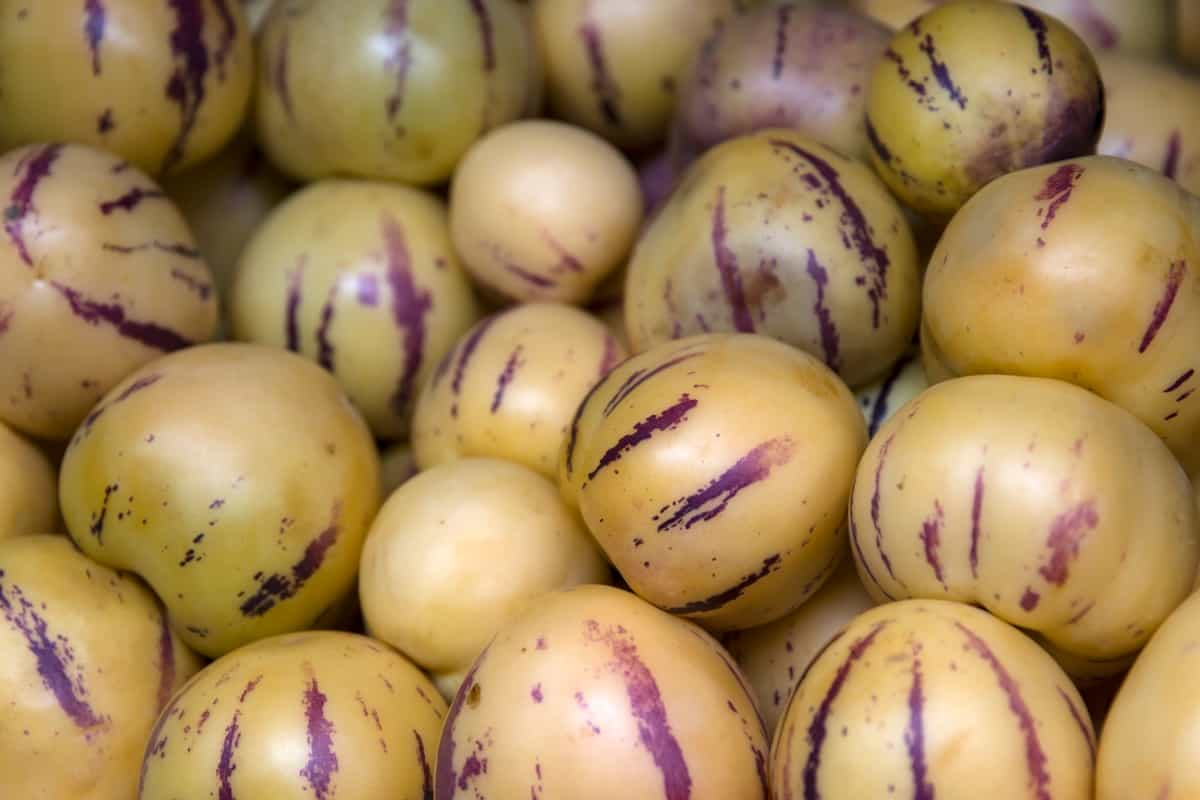
Characteristics of Pepino Melon
Pepino melon is a small, oval-shaped fruit that belongs to the same family as tomatoes, potatoes, and eggplants. It is native to the Andean highlands of South America, where it has been cultivated for centuries by the indigenous people. Pepino melon has yellow-green skin with purple stripes or spots when ripe and creamy white flesh with small black seeds.
This fruit is sweet, juicy flavor that resembles a combination of melon and cucumber, hence its name, Pepino, which means cucumber in Spanish. Pepino melon is rich in vitamin C, potassium, fiber, and antioxidants and has a low-calorie content. It can be eaten as raw, cooked, processed into juice, jam, or wine.
Selecting the Ideal Growing Location for Pepino Melon
Pepino melon is a warm-weather crop that thrives in subtropical and tropical climates. It can tolerate temperatures between 10°C and 35°C but prefers a range of 18°C to 25°C. It also needs plenty of sunlight, at least 6 hours per day, and protection from strong winds and frost. Pepino melon can be grown in containers or on the ground as long as the soil is well-drained, fertile, and slightly acidic (pH 5.5 to 6.5). The plant can grow up to one meter height and width and produces flowers and fruits throughout the year.
Preparing the Soil for Pepino Melon Cultivation
To prepare the soil for pepino melon cultivation, you need to loosen it up to a depth of 30 cm and mix in some organic matter, such as compost or manure. This will improve the fertility, soil structure, and water retention. You can also add some lime, sulfur to adjust the soil pH if needed. You should also remove any weeds or stones from the planting area and create raised beds, mounds to improve drainage, prevent root rot.
Choosing the Right Varieties of Pepino Melon
There are several varieties of pepino melon available in the market, each with different characteristics such as size, shape, color, flavor, and yield.
- El Camino: A large variety that produces oval fruits with yellow skin and purple stripes. It has a sweet and aromatic flavor and a high yield potential.
- El Caminito: A smaller variety that produces round fruits with green skin and purple spots. It has a mild and refreshing flavor and a moderate yield potential.
- El Dorado: A medium-sized variety that produces pear-shaped fruits with golden-yellow skin and purple stripes. It has a rich and fruity flavor and a high yield potential.
- El Sol: A small variety that produces round fruits with yellow skin and purple spots. It has a crisp and juicy flavor and a low yield potential.
In case you missed it: Field Preparation for Watermelon: Requirements for High Yield
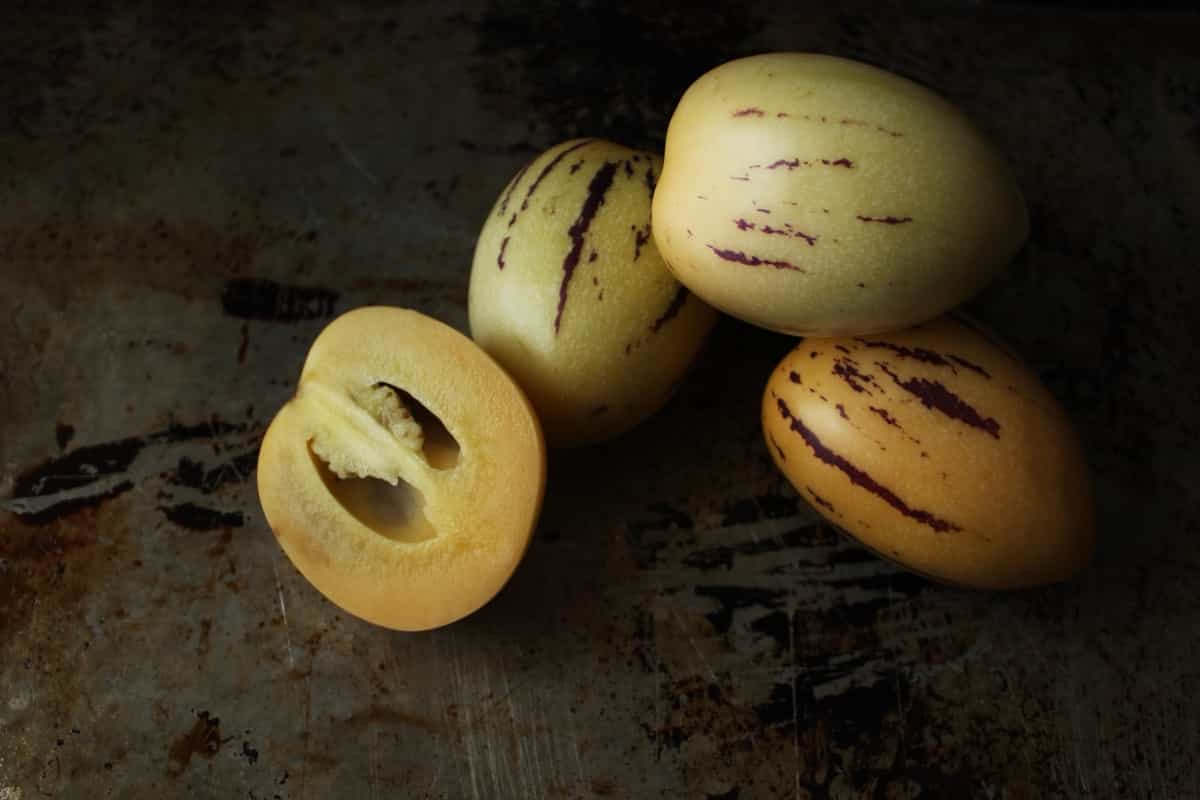
Planting Techniques for Pepino Melon
Seeds or cuttings can propagate Pepino melon. Seeds can be sown directly in soil or pots after soaking them in water for 24 hours. Cuttings can be taken from healthy stems that are about 15 cm long and have at least 2 nodes. The cuttings should be dipped/ placed in rooting hormone and planted in moist soil or perlite. The seeds or cuttings should be kept in a warm and humid place until they germinate or root, which can take from 2 to 4 weeks.
The seedlings or rooted cuttings can be transplanted to their final location when they have at least four leaves and are about 10 cm tall. The spacing between plants should be about 60 cm apart in rows that are 1 meter apart. The plants should be watered well after planting and mulched with straw or grass clippings to conserve moisture and suppress weeds.
Irrigation and Water Management in Pepino Melon Farming
Pepino melon plants need regular watering to maintain their growth and fruit production. The frequency, amount of watering depend on the soil type, climate, and stage of development of the plants. Generally, the plants need more water during flowering and fruiting than during vegetative growth.
The soil should be kept moist but not soggy, as excess water can cause root rot and fungal diseases. A drip irrigation system is recommended for pepino melon farming, as it delivers water directly to the root zone of the plants without wetting the foliage or wasting water through evaporation or runoff.
Best Fertilizers for Pepino Melon
Pepino melon plants need a balanced fertilizer that provides nitrogen, phosphorus, and potassium for healthy growth and fruit production. A general-purpose fertilizer with have ratio of 10-10-10/ 12-12-12 can be applied every month during the growing season. Alternatively, organic fertilizers such as compost, manure, or seaweed can be used to enrich the soil and provide nutrients for pepino melon plants.
In case you missed it: Top 19 Water Harvesting Techniques: What is Water Harvesting and Benefits of It
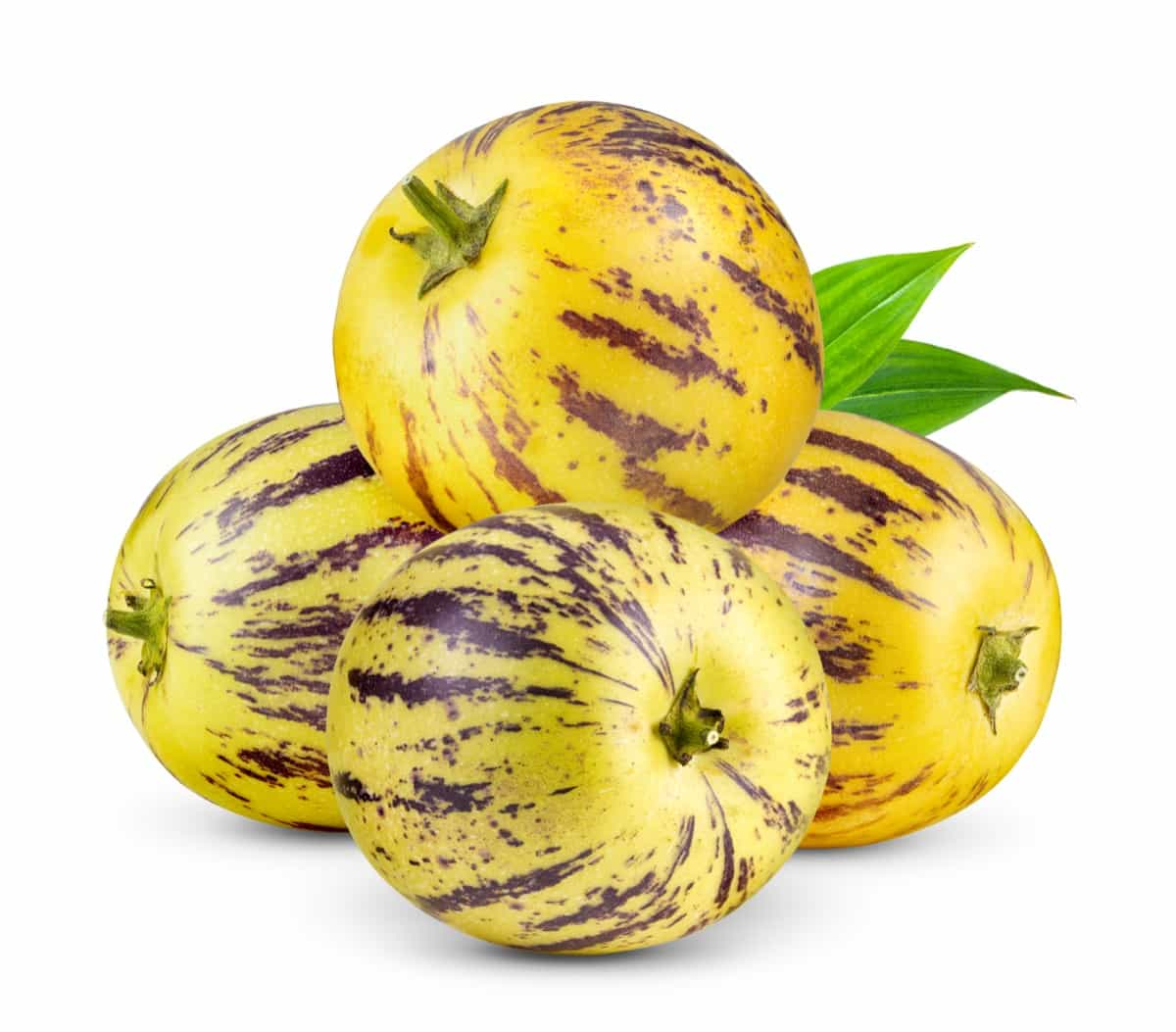
Pest and Disease Control in Pepino Melon Farming
Pepino melon plants are susceptible to some pests, diseases which can affect growth and yield. Some common pests include aphids, whiteflies, spider mites, and slugs. Spraying with insecticidal soap, neem oil, or pyrethrum can control these. Some common diseases include powdery mildew, anthracnose, mosaic virus, and root rot. These can be prevented by doing good hygiene, crop rotation, mulching, and pruning. If symptoms appear, fungicides or bactericides can be applied to treat the affected plants.
Pruning and Training Methods for Pepino Melon Plants
Pepino melon plants can benefit from pruning and training to improve their shape, airflow, and fruit quality. Pruning involves removing dead, diseased, or damaged branches, as well as suckers and lateral shoots that compete with the main stem. Pruning should be done in early spring or after harvesting. Training involves supporting the plant with stakes, cages, or trellises to keep it upright and prevent it from sprawling on the ground. Training should be done when the plant is young and before it starts flowering.
Harvesting and Post-Harvest Handling of Pepino Melons
When pepino melons change color from green to yellow or purple, depending on the type, they are ready to be harvested. Pepino melons vary in color. Pick them up carefully, either with a sharp knife or by hand, and be sure to keep the short stem of the fruit attached. Pepino melons may be kept for up to a week at room temperature or for up to two weeks in the refrigerator. Both of these storage methods are viable options. It is suggested that they be rinsed before to consumption or processing. Fresh pepino melons may be consumed, roasted, juiced, or preserved in a variety of ways.
Growing Pepino melons in a Greenhouse
Growing Pepino melons in a greenhouse is a smart and profitable choice. In a greenhouse measuring 8 meters by 30 meters, you can plant 300 to 500 seedlings. This controlled environment doubles the yield compared to open-field cultivation. What’s more impressive is that Pepino melons are twice as profitable as typical greenhouse crops like tomatoes and capsicum.
In case you missed it: Everything You Want to Know About Wandering Jew Plant: Propagation, Growing, and Caring
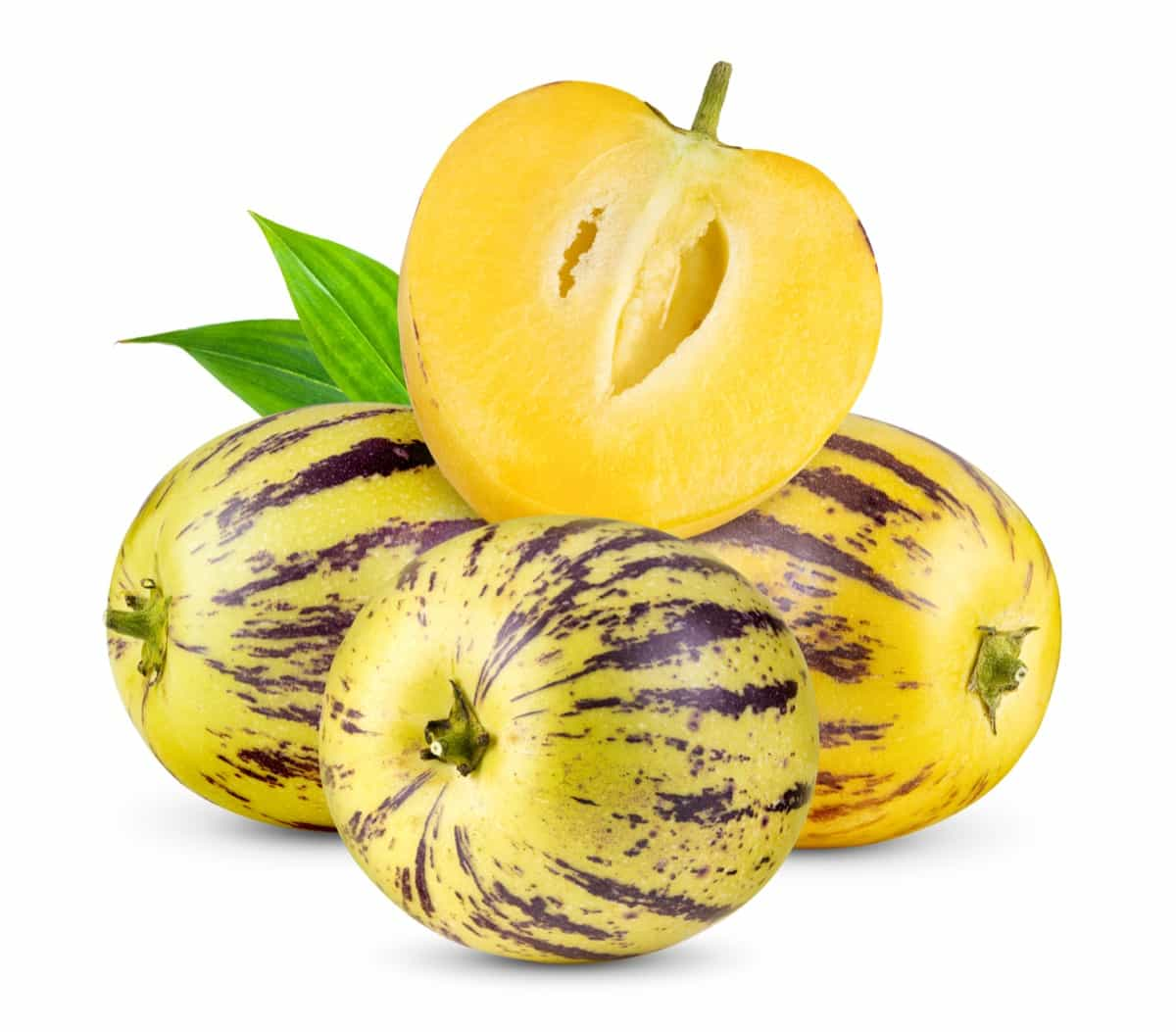
Their lifespan extends beyond three years in a greenhouse, offering a longer period of productivity. These melons are excellent for crop rotation, helping to reduce pests and diseases naturally. Additionally, they’re cost-effective to grow since they thrive in organic conditions, meaning lower capital requirements. Switching to Pepino melons in your Greenhouse is a refreshing change from traditional crops.
Creating a Business Plan for Growing Pepino Melons
Growing pepino melons can be a profitable business if planned well. A business plan should include the following elements:
- Market analysis: Identify the target market, demand, competition, pricing, and distribution channels for pepino melons.
- Production plan: Determine the land area, soil type, climate, irrigation system, planting method, variety selection, fertilizer application, pest and disease management, harvesting method, and post-harvest handling for pepino melons.
- Financial plan: Estimate the capital investment, operating costs, revenue projection, break-even point, and return on investment for pepino melons.
- Marketing plan: Develop a marketing strategy which includes branding, promotion, packaging, labeling, and quality assurance for pepino melons.
Marketing Strategies for Pepino Melon Produce
Pepino melon is a small, sweet fruit that belongs to the same family as tomatoes and potatoes. It is native to South America and can be grown in warm climates or greenhouses. Pepino melon farming can be a profitable venture if done properly.
Identify your target market and customers. Pepino melon is an exotic fruit that may appeal to people who like trying new foods, health-conscious consumers, or ethnic groups that are familiar with the fruit. You can sell produce to local markets, grocery stores, restaurants, or online platforms that specialize in exotic fruits.
Promote the benefits and uses of pepino melon. Pepino melon has a mild, refreshing flavor that can be eaten fresh/ used for cooking. It is rich in vitamin, potassium, fiber, and antioxidants. You can educate your customers on how to choose, cut, and enjoy pepino melon in various ways, such as salads, smoothies, desserts, or jams.
Differentiate your product from competitors. Pepino melon is a rare fruit in most regions so that you may have an advantage over other fruits in terms of novelty and uniqueness. However, you may also face competition from other exotic fruits or similar fruits like honeydew or cantaloupe. You can highlight the features that make your pepino melon superior, such as quality, freshness, taste, or organic certification.
In case you missed it: Cost of Farming Per Acre in India: Calculator for State-wise Cultivation Input Cost Per Acre
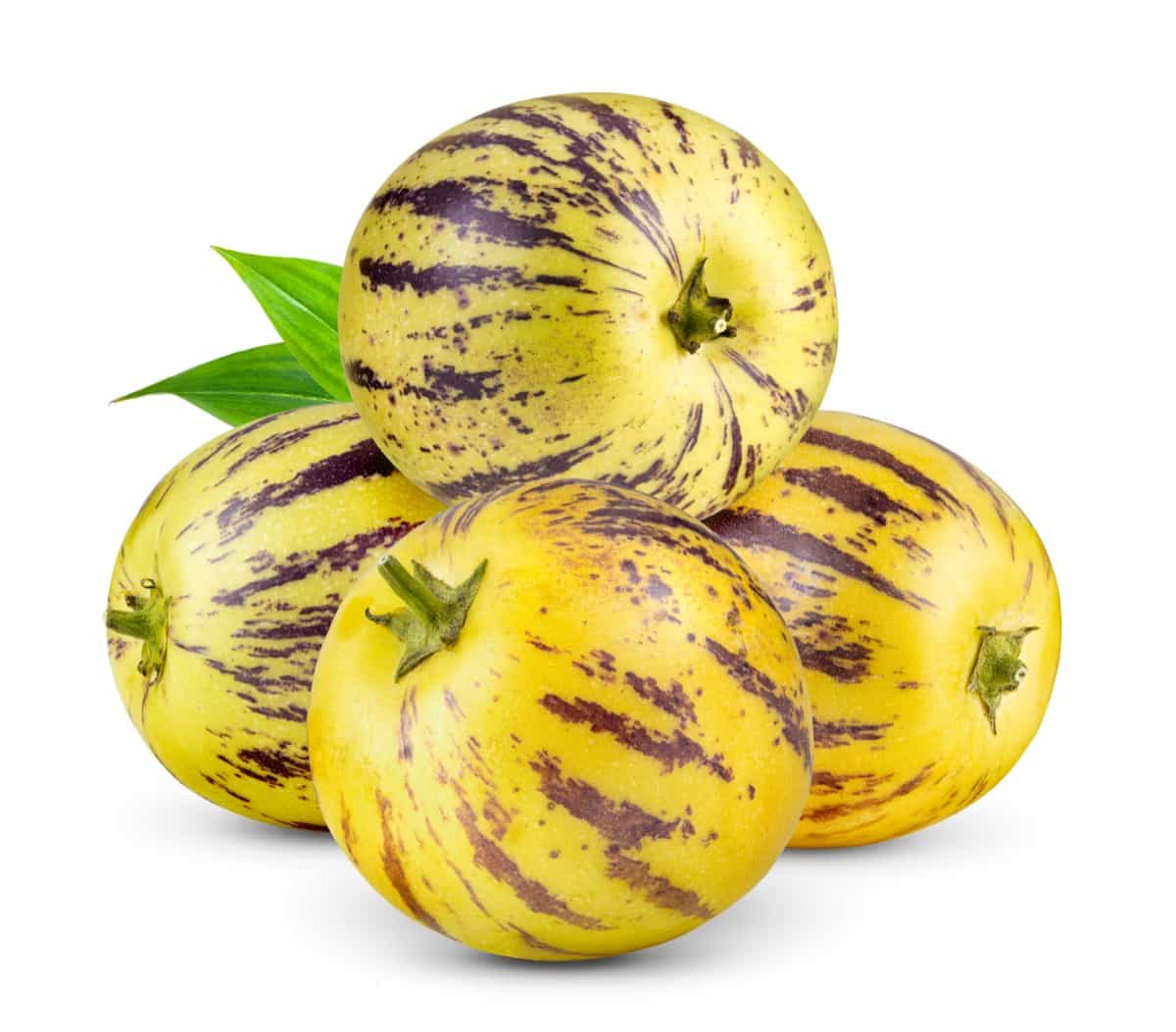
Set a reasonable price for your product. Pepino melon is a relatively expensive fruit compared to other fruits due to its rarity and production costs. It would help if you considered your production costs, market demand, and profit margin when setting your price. You can also offer discounts, bundles, or samples to attract customers and increase sales.
Economic Viability and Financial Planning in Pepino Melon Farming
Estimate your startup costs and operating expenses. Pepino melon farming requires some initial investment in seeds or cuttings, soil, fertilizer, irrigation system, trellis or cage, Greenhouse (optional), pest control, harvesting tools, packaging materials, transportation, and marketing. It would help if you also accounted for ongoing costs such as labor, water, electricity, maintenance, taxes, and insurance.
Calculate your expected income and return on investment. Pepino melon farming can generate a good income if you have a high yield and a steady market. The yield of pepino melon depends on factors such as climate, soil quality, plant variety, pruning method, and pest management. The average yield of pepino melon is about 10 kg per plant per year. The market price of pepino melon varies depending on the region, season, quality, and supply and demand. The average price of pepino melon is about $5 per kg.
You can estimate your income by multiplying your yield by your price. You can estimate your return on investment by dividing your income by your costs. Evaluate your risks and opportunities. Pepino melon farming has some risks and challenges that you need to be aware of and prepare for. Some of these include weather fluctuations, pest infestations, diseases, market fluctuations, competition, regulations, and customer preferences. You also need to identify and seize any opportunities that may arise in your business environment, such as new markets, new technologies, new partnerships, or new trends.
In case you missed it: Weed Management in Onion Farms: Control with Organic, Mechanical, Biological, and Herbicides
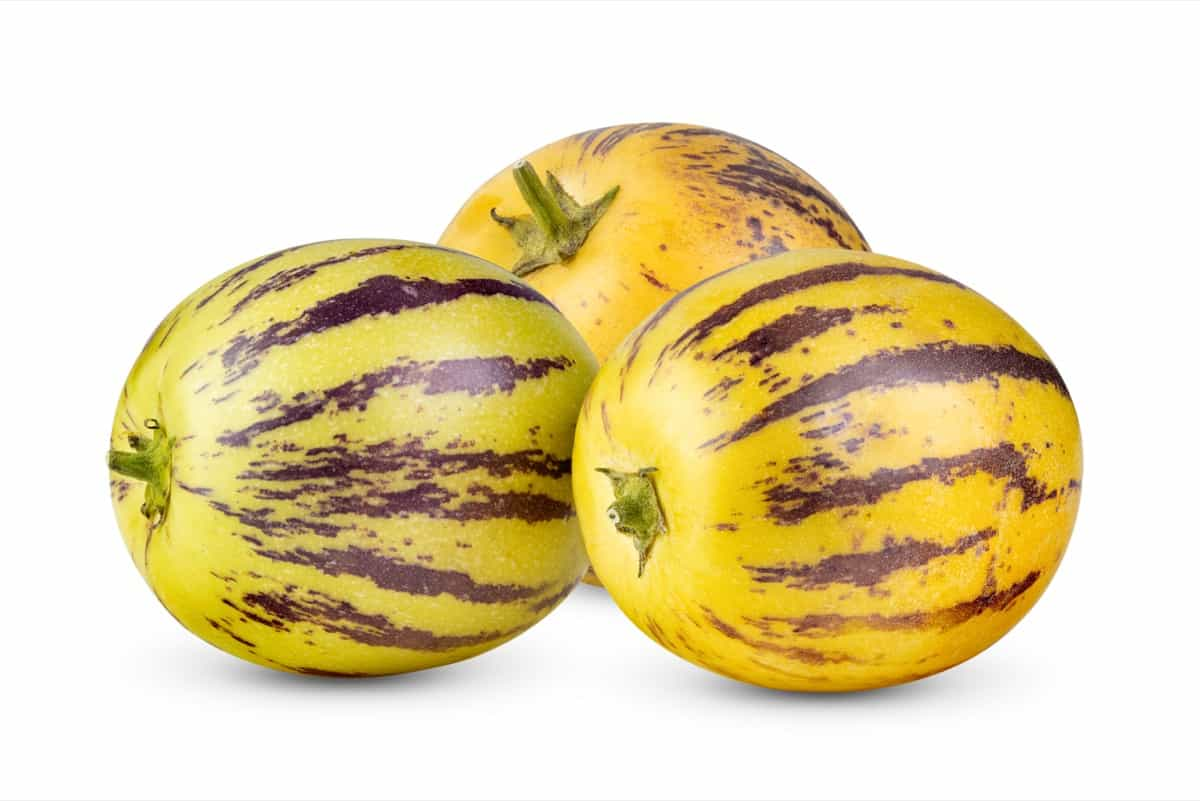
Conclusion
Pepino melon farming presents an innovative and lucrative business opportunity. With higher yields and profits, especially in greenhouse settings, and lower capital needs due to organic cultivation, it’s an attractive alternative to traditional greenhouse crops. This venture not only promises financial gains but also offers a sustainable and long-term agricultural practice for farmers and entrepreneurs alike.
- Types of Pesticides Used in Agriculture: A Beginner’s Guide
- Economical Aquaculture: A Guide to Low-Budget Fish Farming
- 15 Common Planting Errors That Can Doom Your Fruit Trees
- How to Make Houseplants Bushy: Effective Tips and Ideas
- Innovative Strategies for Boosting Coconut Pollination and Yield
- Pollination Strategies for Maximum Pumpkin Yield
- The Complete Guide to Chicken Fattening: Strategies for Maximum Growth
- Natural Solutions for Tulip Problems: 100% Effective Remedies for Leaf and Bulb-Related Issues
- Revolutionizing Citrus Preservation: Towards a Healthier, Greener Future
- Natural Solutions for Peony Leaf and Flower Problems: 100% Effective Remedies
- Maximizing Profits with Avocado Contract Farming in India: A Comprehensive Guide
- Natural Solutions for Hydrangea Problems: 100% Effective Remedies for Leaf and Flowers
- The Ultimate Guide to Choosing the Perfect Foliage Friend: Bringing Life Indoors
- From Sunlight to Sustainability: 15 Ways to Use Solar Technology in Agriculture
- The Ultimate Guide to Dong Tao Chicken: Exploring from History to Raising
- The Eco-Friendly Makeover: How to Convert Your Unused Swimming Pool into a Fish Pond
- Mastering the Art of Delaware Chicken Farming: Essentials for Healthy Backyard Flocks
- 20 Best Homemade Fertilizers for Money Plant: DIY Recipes and Application Methods
- How to Craft a Comprehensive Free-Range Chicken Farming Business Plan
- Brighten Your Flock: Raising Easter Egger Chickens for Beauty and Bounty
- How to Optimize Your Poultry Egg Farm Business Plan with These Strategies
- Subsidy for Spirulina Cultivation: How Indian Government Schemes Encouraging Spirulina Farmers
- Ultimate Guide to Raising Dominique Chickens: Breeding, Feeding, Egg-Production, and Care
- Mastering the Art of Raising Jersey Giant Chickens: Care, Feeding, and More
- Ultimate Guide to Raising Legbar Chickens: Breeding, Farming Practices, Diet, Egg-Production
- How to Raise Welsummer Chickens: A Comprehensive Guide for Beginners
- How to Protect Indoor Plants in Winter: A Comprehensive Guide
- Ultimate Guide to Grow Bag Gardening: Tips, Tricks, and Planting Ideas for Urban Gardeners
- Guide to Lotus Cultivation: How to Propagate, Plant, Grow, Care, Cost, and Profit
- Agriculture Drone Subsidy Scheme: Government Kisan Subsidy, License, and How to Apply Online
- Ultimate Guide to Raising Araucana Chickens: Breed Profile, Farming Economics, Diet, and Care
- Bringing Hydroponics to Classroom: Importance, Benefits of Learning for School Students
- Ultimate Guide to Raising Polish Chickens: Breed Profile, Farming Economics, Diet, and Care
- Ultimate Guide to Raising Australorp Chickens: Profile, Farming Economics, Egg Production, Diet, and Care
- Silkie Chicken Farming: Raising Practices, Varieties, Egg Production, Diet, and Care
- Sussex Chicken Farming: Raising Practices, Varieties, Egg Production, Diet and Care